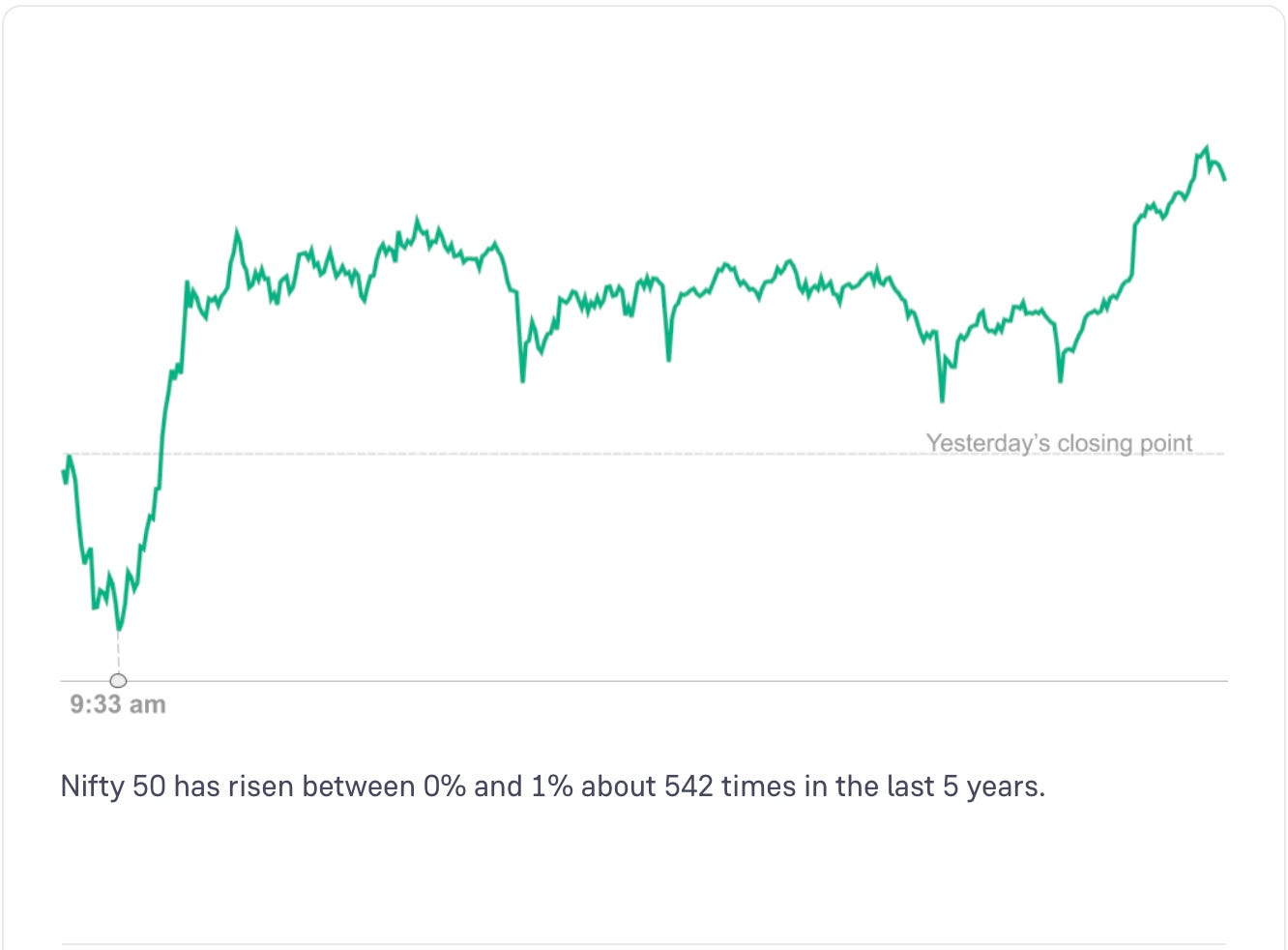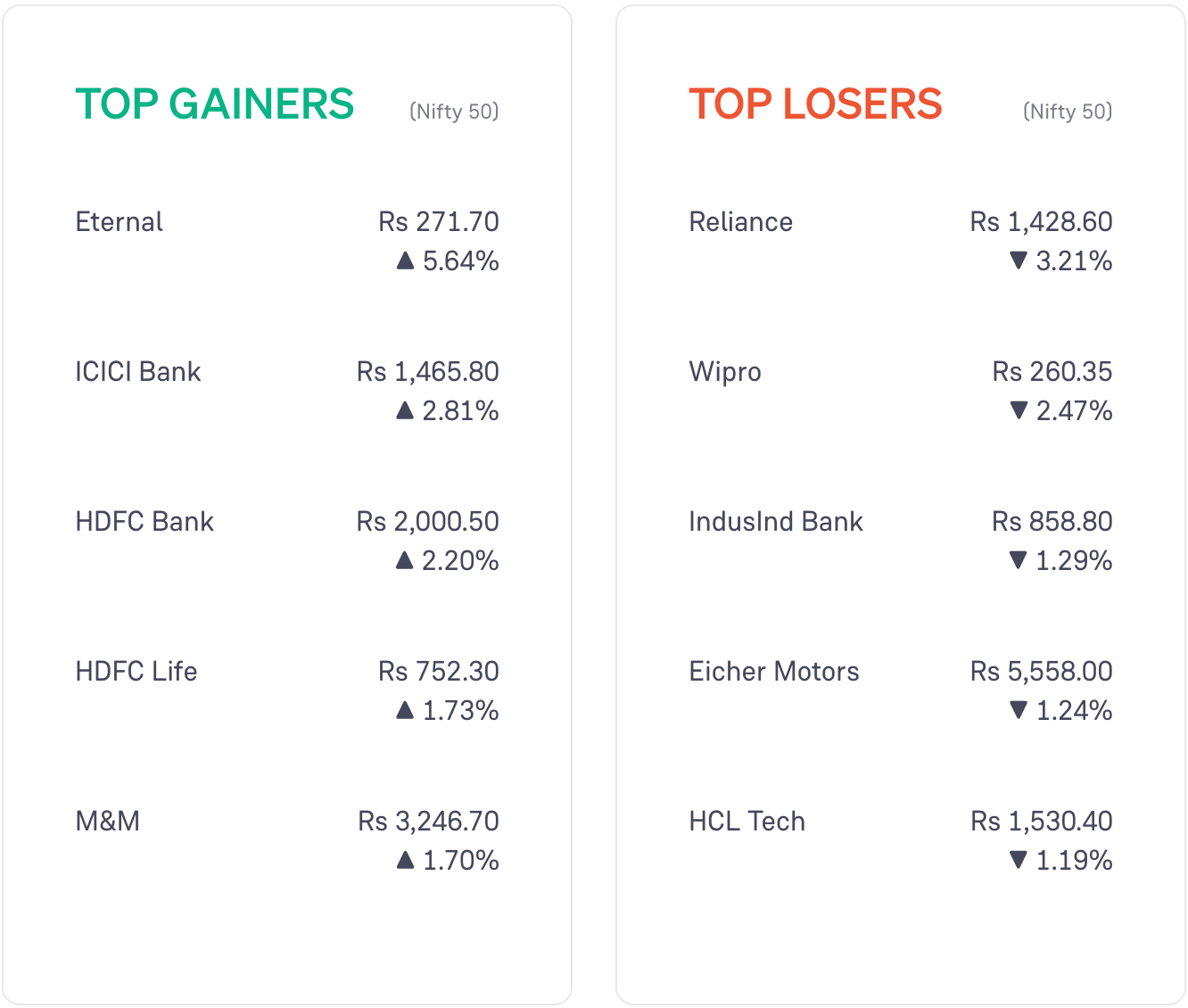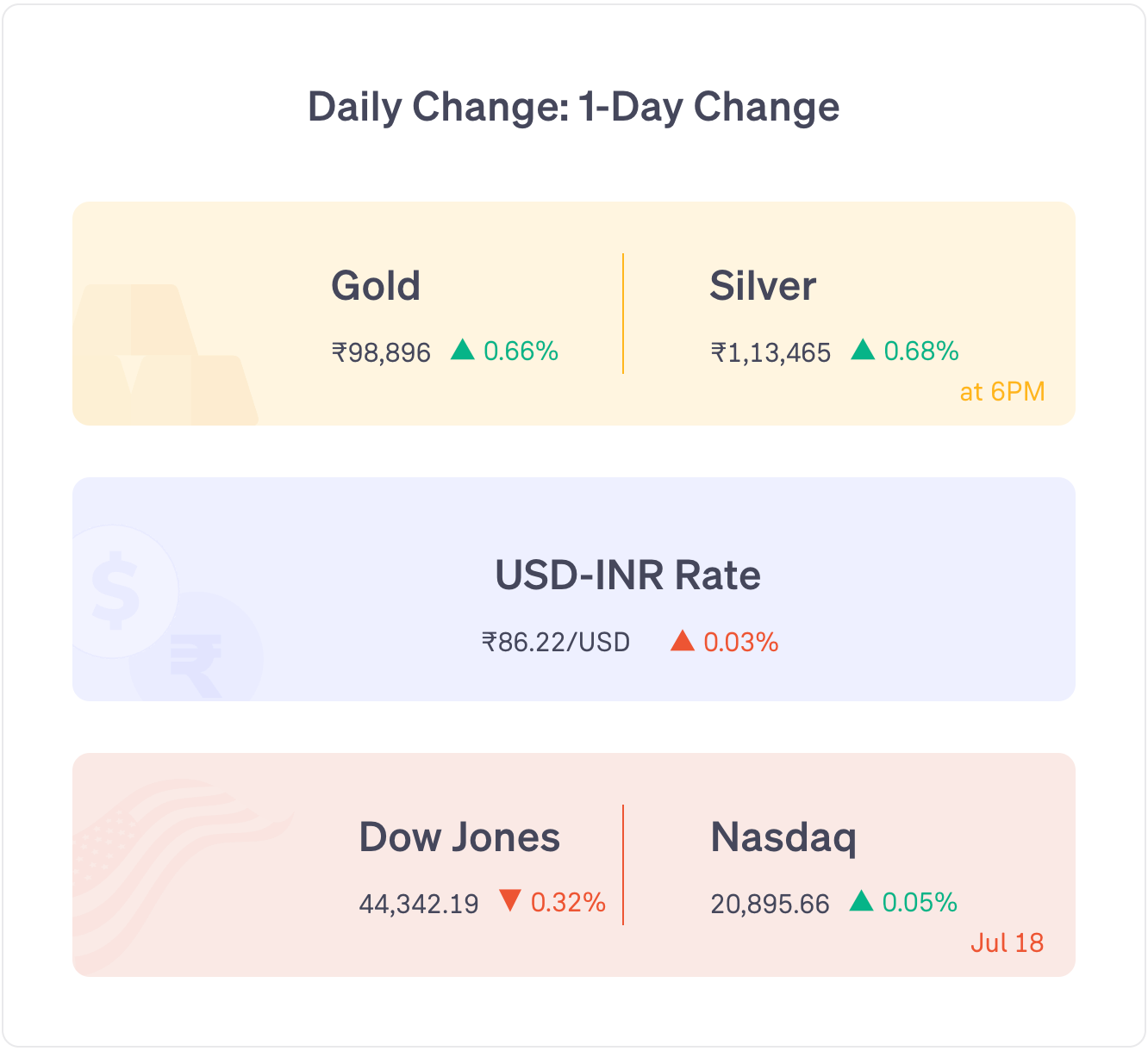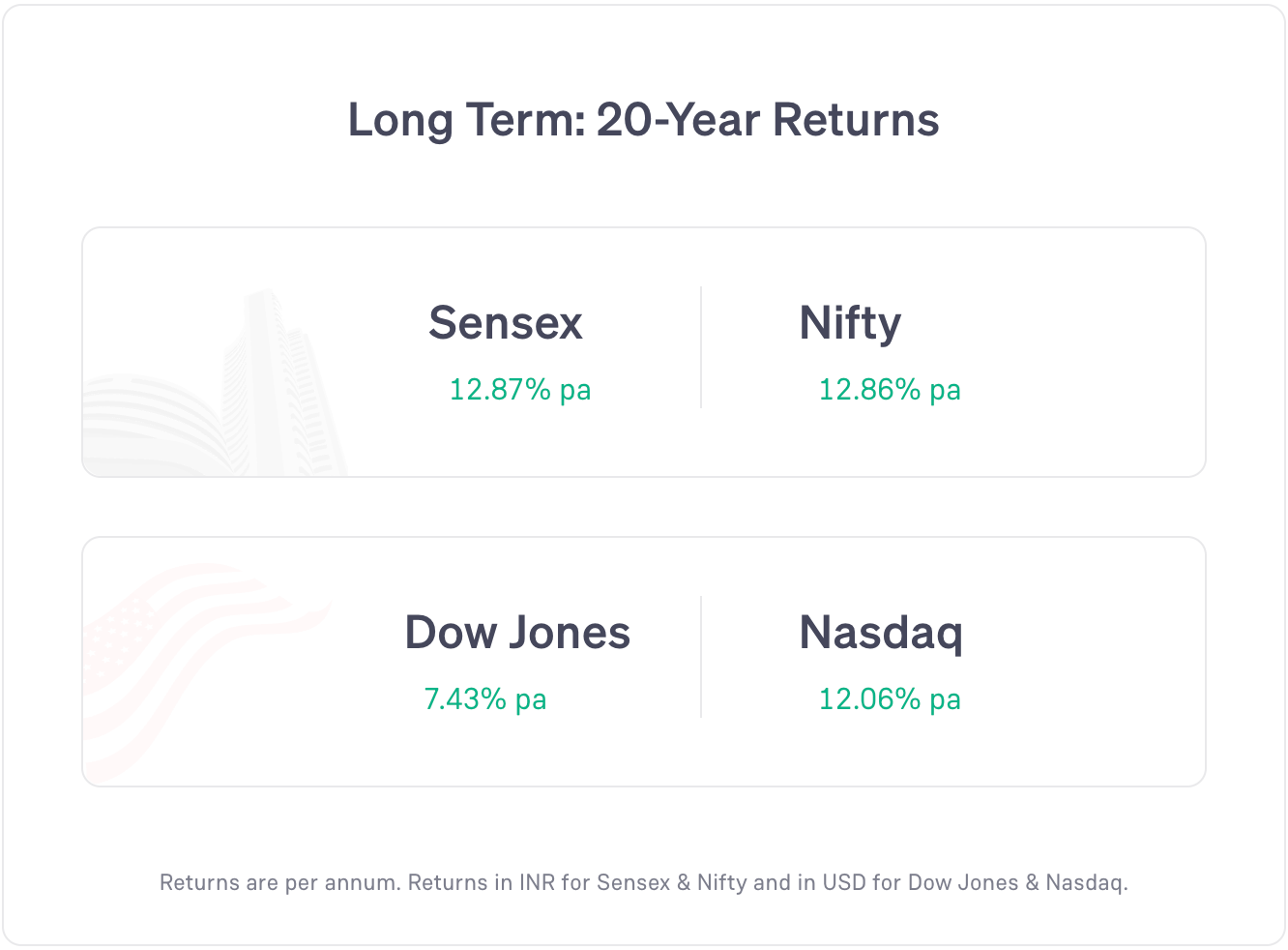Jane St. to resume, Anthem IPO 27% listing gains, HDFC Bank bonus+dividend, & more — Daily Digest
Monday, 21 July 2025
Markets opened slightly below Friday’s closing point.
Nifty 50 rose sharply in the early hours and closed in green.
Private bank stocks and metal stocks rose the most today. Oil and gas stocks and PSU bank stocks fell the most.
Global markets: Most US markets were flat and most European markets closed in red. Asian markets showed a mixed trend.
News
India’s infrastructure output rose by 1.7% in June (vs 1.2% in May). Petroleum refinery products, steel and cement sectors rose while coal, crude oil, natural gas, fertilisers, and electricity sectors fell.
SEBI has allowed US based firm Jane Street to resume operations in the Indian stock markets following its compliance with the SEBI regulation: as per various media reports.
Anthem Biosciences IPO got listed on the stock exchanges at a 26.85% premium over its issue price and closed 28.13% up at the end of the day.
Stocks Updates
L&T: company subsidiary, L&T Energy GreenTech, will build India’s largest green hydrogen plant at Indian Oil’s Panipat refinery. It will supply 10,000 tonnes of green hydrogen annually for 25 years.
Titan: will acquire a 67% stake in UAE-based Damas Jewellery for around Rs 2,400 crore, via its subsidiary, to expand into GCC countries’ jewellery market.
HDFC Bank: net profit fell 1.3% year-on-year to Rs 16,258 crore in the April-June quarter. Dividend announced: Rs 5 per share, with record date as 25 July. It also announced a 1:1 bonus issue of shares with a record date as 27 August.
UltraTech: net profit rose 49% year-on-year to Rs 2,225.90 crore in the April-June quarter.
Eternal: net profit fell 90% year-on-year to Rs 25 crore in the April-June quarter, while its revenue increased 70% to Rs 7,167 crore. The company will also form a new wholly owned subsidiary, Blinkit Foods, to focus on food services, including preparation, sourcing, sale, and delivery.
IDBI Bank: net profit rose 16.4% year-on-year to Rs 2,019.18 crore in the April-June quarter.
Havells India: net profit fell 14.8% year-on-year to Rs 347.72 crore in the April-June quarter.
Jio Financial: will form a 50:50 reinsurance joint venture with Allianz Europe B.V. and will explore similar partnerships in life and general insurance businesses.
Word of the Day
Rolling Returns
It is a way of measuring returns that reduces time bias
Example: you invest Rs 1 lakh in ABC mutual fund on 1 Jan 2024.
And your initial Rs 1 lakh becomes Rs 1,10,000 on 1 Jan 2025. The profit is Rs 10,000.
Now, let’s say you had invested Rs 1 lakh on 2 Jan 2024. And you earn a lower return of Rs 8,000 till 2 Jan 2025.
In summary, if you had invested on
-1 Jan 2024: you make a yearly profit of Rs 10,000.
-2 Jan 2024: you make a yearly profit of Rs 8,000.
In both scenarios, the annual return is different if someone invests on different days in ABC mutual fund.
If we calculate 1-year returns for every date just like above (1st Jan, 2nd Jan, 3rd Jan, etc) we will get a better idea of how that fund is performing — this is called rolling returns.
This is a much better way of checking a fund's returns instead of taking a single date.
In the example above, we took an interval of 1 year and calculated returns for every date (1st Jan, 2nd Jan, 3rd Jan, etc). This is called a 1-year rolling return.
If instead of 1 year, we had taken an interval of 3 years, it would be called 3-year rolling returns. You can use 1/3/5/10 year, etc. as the interval when calculating rolling returns.
6 Day Course
Theme: allocating monthly income
Day 1: Monday
Many new earners struggle with budgeting and allocation of their income.
In this week, we will discuss this topic.
The reason there is no simple way to do is because everyone’s needs are different.
This is why it becomes complex. But that said, it is not difficult to understand.
First and foremost — invest 20% in-hand income. Although 30% is ideal.
If you can, invest more than that. You can make this 40%, 50%, or even 90% if you can. But at least 20% is a must.
The reason we start with investing is because we tend to spend based on what is in our bank account.
This includes investment in all kinds of assets — mutual funds, shares, FD, etc — at least 20%.
Featured Question
Q. “It is generally said that one should have mix of debt and equity mutual funds in their portfolio to get stable returns. In case of stocks combination of what type of stocks is recommended for stable returns? Or like say combination of certain sectors stock etc.”
Yes, equity mutual funds invest in stocks; debt mutual funds invest in bonds/deposits/etc.
So if you invest in both types of mutual funds, your portfolio will have greater stability.
What about stocks?
If you are investing in stocks, it is similar to investing in equity mutual funds.
So to balance this, you should invest in bonds, FDs, RDs, etc to get a similar balancing effect.
Stocks cannot match the stability offered by bonds, FDs, deposits, etc.
Also, do note that investing in equity (via shares or via equity mutual funds) will never be 100% stable. There will always be volatility.
The higher you invest in bonds/deposits/FDs, the more stable your returns will be.
But the trade-off of doing that is lower returns.
Did you like this edition?
Leave a feedback here!






